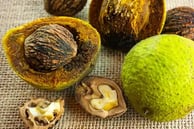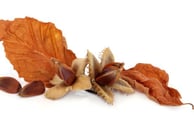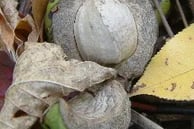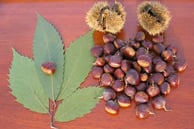Foraging and Utilizing Wild Nuts
FOODWILD EDIBLESSEASONAL EATING
By: Stephanie
12/21/20234 min read


Introduction
Foraging for, harvesting, and utilizing wild collected nuts is not only a great way to increase your food security and save money, but it also provides a wonderful opportunity to improve your nutrition. Nuts are a powerhouse of nutrients, packed with healthy fats and protein, and offer a range of benefits for your eyes and brain.
Identifying Wild Nuts
In Ohio, there are several common wild nuts that can be collected and enjoyed. Before embarking on your nut foraging adventure, it is crucial to learn how to properly identify the different types of nuts that can be found in the wild. Some common examples include black walnuts, shagbark hickory nuts, and beechnuts. Familiarize yourself with their distinct characteristics, such as size, shape, and color, to ensure you gather the right nuts.
Processing Black Walnuts
One such nut is the black walnut, which has a distinctive hard shell and a rich, buttery flavor. These nuts can be used in a variety of dishes, such as salads, baked goods, and even as a topping for ice cream. Black walnuts are a popular choice for foragers due to their unique flavor and versatility.
To properly process black walnuts, start by collecting the fallen nuts and removing the green hulls. It is important to wear gloves during this process as the hulls can stain your hands. Once the hulls are removed, carefully wash the nuts to remove any remaining debris. After cleaning, you can choose to air dry the nuts or crack and roast them to enhance their flavor. Roasting can be done by spreading the nuts on a baking sheet and placing them in the oven at a low temperature for a specific duration. Once roasted, the nuts can be stored for future use or incorporated into various recipes.
Utilizing Black Walnut Hulls
While the black walnut nuts are the main attraction, don't overlook the potential of the green hulls. These hulls can be reserved for making a tincture, which has various medicinal properties. To create the tincture, chop the unblemished, green hulls into small pieces and place them in a jar. Fill the jar with a high-proof alcohol, such as vodka or brandy, and let it sit for several weeks. Strain the liquid and store it in a dark bottle for long-term use.
Identifying Beechnuts
Beechnuts are the edible seeds found inside the prickly husks of beech tree fruits. To identify beechnuts, look for small, triangular nuts with a dark brown outer shell. Collecting beechnuts is best done in the autumn when the fruits have fallen from the trees. I find them most plentifully in October. Once collected, remove the husks by cracking them open or rubbing them together.
The inner seed, or beechnut, can then be processed by roasting them in the oven or on a stovetop until they turn golden brown. Once roasted, beechnuts can be eaten as a nutritious snack on their own or used as a topping for salads, oatmeal, or baked goods. Their sweet, nutty flavor adds a delicious touch to various dishes. Enjoy the unique taste and benefits of beechnuts in your culinary adventures. Beechnuts should not be consumed raw as they can cause stomach distress.
Toasted Hickory Nut Brownies
Another nut that can be found in Ohio is the hickory nut, which has a slightly sweet and nutty taste. Hickory nuts can be used in desserts, like cookies and pies, or simply enjoyed on their own as a snack.
One delightful way to enjoy the fruits of your foraging labor is by making delicious brownies topped with toasted hickory nuts. To begin, gather shagbark hickory nuts and remove the shells. Toast the nuts in a dry skillet over medium heat until they become fragrant and slightly golden.
Prepare your favorite brownie recipe and pour the batter into a baking dish. Sprinkle the toasted hickory nuts on top and bake according to the recipe instructions. The combination of the rich, chocolatey brownies and the crunchy, nutty topping will surely delight your taste.
American Chestnut
Additionally, Ohio is home to the American chestnut, which has a sweet and creamy flavor. These nuts can be roasted and enjoyed as a healthy snack or used in recipes like stuffing or soups. So, next time you're out exploring in Ohio, be sure to keep an eye out for these delicious wild nuts!
Conclusion
Foraging for and utilizing wild collected nuts is a rewarding experience that not only provides you with a sustainable food source but also enhances your nutrition. By learning to identify different types of nuts and properly processing them, you can enjoy the benefits of these nutrient-dense powerhouses. Whether you choose to make tinctures or create delicious recipes, the possibilities are endless when it comes to incorporating wild nuts into your diet.







